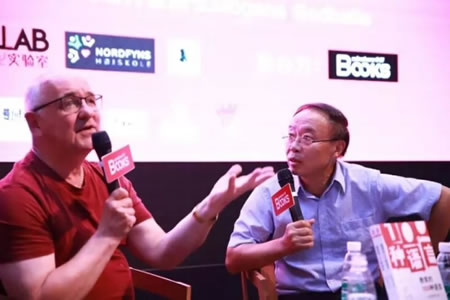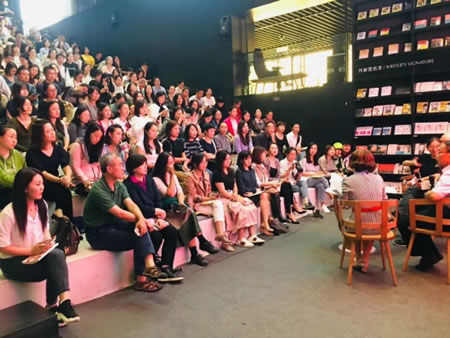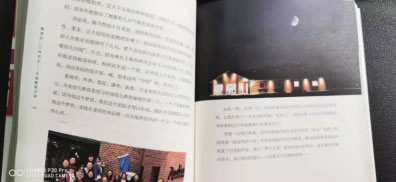
Last night, my educational dialogue with Mr. Mogens, principal of Denmark’s Nordfyn Folk Højskole, proved highly productive. Our conversation centered on comparing Chinese and Danish education systems and exploring mutual learning opportunities, with a focus on building child-centric, creativity-inspiring educational practices. Mr. Mogens shared Danish educators’ perspectives on children and learning, emphasizing that learning stems from intrinsic needs rather than external coercion. He particularly highlighted the critical role of "play" in child development.

When addressing the host’s question about "the greatest difference between Chinese and Danish education," I remarked: "The defining feature of Danish education is children’s freedom. By comparison, Chinese students lack sufficient freedom—not in the sense of unruly behavior, but in terms of freedom of mind, spiritual liberation, and freedom of thought. This explains why Denmark, with a population of just over five million, has produced 13 Nobel laureates."

During the Q&A session, many participants expressed concerns about Chinese children being overburdened, over-regulated, and stifled by excessive "don’ts" and "prohibitions" that hinder creativity.
I responded: "While China and Denmark differ in historical and cultural contexts, making direct replication of Danish practices impossible, we can adapt their educational philosophies through creative integration with Chinese realities. I refuse to believe Chinese children are undeserving of liberating education!"
I briefed Mr. Mogens on China’s ongoing reforms: "China’s educational transformation is gaining momentum. Mainstream schools have made remarkable progress in curriculum innovation and teaching methodologies. For instance, pedagogical approaches are shifting from teacher-centered instruction to guided self-directed learning. Curriculums now emphasize holistic development and creative thinking. Meanwhile, alternative micro-schools outside the traditional system are pioneering even bolder experiments in child respect and creativity cultivation."
Following our dialogue, a brief launch event was held for the new book *100 Languages of Education*.

More Than Just Hans Christian Andersen in Denmark——Preface to 《100 Languages of Education》
My trip to Denmark in March 2018 was an unexpected delight. In January of that year, a gentleman named Dong Ruixiang reached out to invite me to visit Denmark for an educational research project. At first, I was puzzled, as I had never met Mr. Dong. After further communication, I learned that he was a respected scholar. He had been a middle school teacher before resigning to pursue business, later working at the United Nations and serving as the executive director of the 21st Century Education Research Institute, all while maintaining a deep passion for education. During his studies in Denmark, he became enamored with Danish education and resolved to introduce its philosophies and models to China, adapting them creatively to suit the nation’s context.
After much effort, he secured a collaboration with Nordfyns Folk High School (referred to as "Nordfyns College") to establish the "Danish Hans Christian Andersen International Preschool Teachers College" (abbreviated as "AnYou"), aimed at training Chinese preschool educators. Nordfyns College provided facilities and faculty, Mr. Dong handled recruitment, and the Lao Niu Foundation funded the project. This meant all trainees and researchers attended free of charge, with their expenses in Denmark—training, accommodation, meals, and travel—covered by the foundation. Mr. Dong’s initiative was truly remarkable. Each cohort of trainees consisted of frontline teachers, and he also invited one or two education experts to join the study tours. I was fortunate to be invited as one such "expert," allowing me to tag along on this serendipitous journey.
In March 2018, I spent two weeks in Denmark with the second cohort of the "AnYou" training program. Alongside kindergarten teachers from across China, I attended lectures by Danish professors and early childhood educators, visited several kindergartens, and gained a systematic understanding of Denmark’s preschool education. However, the professors’ teachings extended far beyond pedagogy—they delved into Danish history, politics, economy, and society, helping us grasp the cultural "climate" and "soil" that nurtured its educational system.
Yet, as someone focused on secondary education, I longed to explore Denmark’s middle schools and teacher training institutions. Thus, in October 2018, I returned to Denmark with the fifth cohort of "AnYou" trainees, this time funding my own research. During these two weeks, I focused on Danish primary and secondary schools (which are integrated in Denmark), observed high schools—including specialized institutions—and engaged with faculty from Danish teacher training colleges.
Before visiting Denmark, my sole impression of this distant land was Hans Christian Andersen. After two trips, I realized Denmark’s pride extends far beyond the beloved storyteller—it includes educators like Grundtvig, philosophers like Kierkegaard (all three are foremost thinkers), and a legacy of innovation. With a population of 5.73 million (population density: 135.6/km² vs. China’s 144.3/km²) and a land area of 43,000 km² (slightly larger than Taiwan), Denmark was once a European power. It boasts the world’s oldest national flag, born in 1219 and known as "Dannebrog"—"the strength of Danes." Denmark established diplomatic relations with China on May 11, 1950, becoming the second Western nation to do so (after Sweden). It ranks as the world’s least corrupt country, consistently places among the top three in global happiness indices (2nd in 2019, compared to China’s 93rd), and with 13 Nobel laureates among its 5.6 million citizens, holds the highest per capita Nobel rate globally.
Denmark has gifted humanity pioneering scientists: Niels Bohr, founder of quantum mechanics; Hans Christian Ørsted, discoverer of electromagnetism; Ole Rømer, first to measure the speed of light; Valdemar Poulsen, inventor of magnetic recording; Ben Mottelson, contributor to nuclear structure theory; and more. Bohr’s Institute for Theoretical Physics made Copenhagen a mecca for physics. Even the globally popular Problem-based Learning (PBL) model originated at Denmark’s Aalborg University in the 1970s, later endorsed by UNESCO as the "Aalborg Approach."
From education to science, Denmark’s contributions to civilization are profound—a nation where thought and innovation thrive, far beyond the fairy tales of Andersen.
Behind all this lies the power of education. Freedom, equality, democracy, individuality, openness... These are the profound impressions Denmark's education system has left on me. I am well aware that Denmark's national conditions differ from China's, and its educational approaches cannot be directly transplanted onto Chinese soil. Yet humanity shares fundamental values - the yearning for freedom, the call for creativity, the pursuit of civilization, and the aspiration for happiness... These resonate universally. I have always held that Deng Xiaoping's 1983 inscription for Beijing Jingshan School - "Education should face modernization, the world, and the future" - remains timeless. Indeed, we must "ground education in China's national conditions and root it in our cultural soil," but this should not mean closing our doors to the world. This is where our educational confidence lies.
I owe my Danish perspective to the Lao Niu Foundation, and my journey to Denmark to Mr. Dong Ruixiang of the Andersen International Kindergarten College. The insights gained from these two study trips have been documented in diary form on my WeChat public account "Zhenxi Tea House." After compiling and refining over 100,000 words of diary entries, this book "The Hundred Languages of Education: Insights from Danish Pedagogy" has come into being.
The title originates from a Danish teacher's insight: "Children have a hundred languages through which they discover and express the world." This metaphorical "hundred languages" refers not only to verbal communication but also to all sensory experiences - auditory, tactile, olfactory, gustatory, and intellectual faculties including imagination. It signifies children's multifaceted ways of understanding and expressing reality.
This book preserves the diary format with some longer entries split into sections for readability. Each diary entry (or section) is supplemented with a title. While personal anecdotes were selectively edited, classroom observations - recorded verbatim due to fast typing capabilities - and site visits are presented authentically. Additionally, select descriptions of Danish landscapes and social scenes have been retained to offer readers glimpses beyond education: Denmark's cloud-dappled skies, wildflower meadows, endless forests, vast oceans, exuberant sunrises, and blood-red sunsets...
May this pictorial volume bring you a different reading experience from my previous works. Thank you, dear readers!
May 2, 2019
